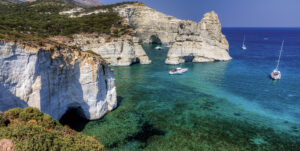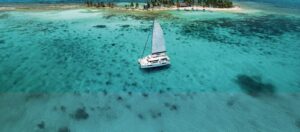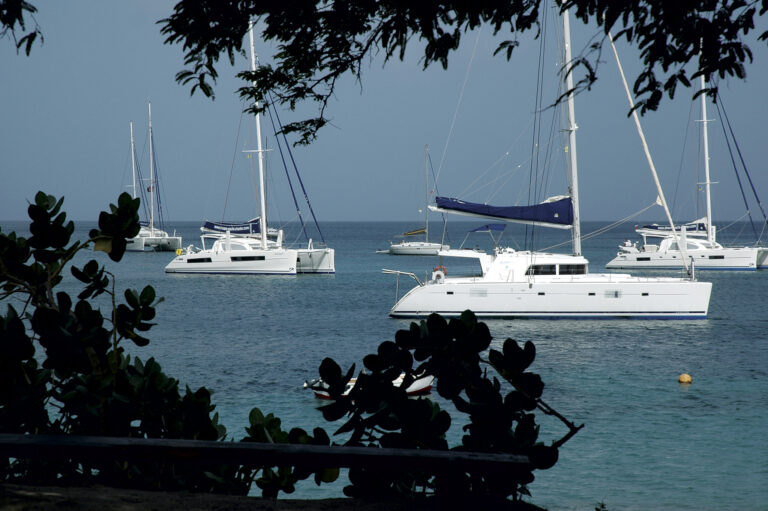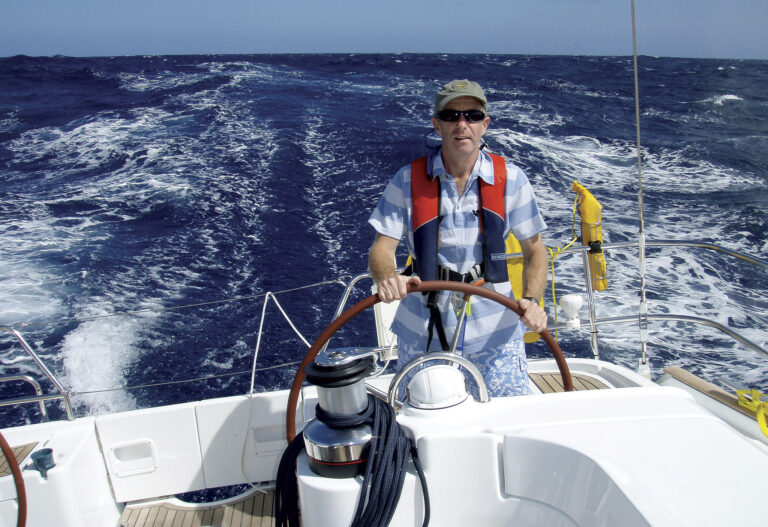HAVE A QUESTION ABOUT CHARTERING?
Readers want to know: How to get there; when to go; what to pack. I’m not a travel agent—far from it—but I do have some practical experience to share, especially when it comes to the Caribbean.
How to get there. San Juan, Puerto Rico, has long been the hub for travel from the U.S. mainland to the islands, and American Airlines has long dominated air service. There are, however, other airlines and other routes. Here’s my strategy:
Check airline Web sites for specials and compare prices, and/or use one of the discount sites (kayak.com, cheaptickets.com, airgorilla.com) to explore airlines, prices, and routes. I’ve found that on occasion you can do better with the airline sites.
I always look for a nonstop flight from a U.S. city to the island I’m interested in. For example, American offered seasonal direct flights from a selection of U.S. cities to St. Thomas, and happily the city I live in was one of them. The flight from St. Thomas to Boston took 3 hours plus, and I didn’t have to hang out in San Juan, waiting for a connection. It isn’t clear from aa.com whether this service will be continued.
It’s sometimes cheaper or more convenient to fly to St. Thomas even if your destination is Tortola. There are frequent ferries from St. Thomas. There’s service via high-speed catamaran from Charlotte Amalie to the ferry dock in Road Town (www.tortolafastferry.com); the regular ferries leave from either downtown or Red Hook (at the east end of St. Thomas) and come in at West End, Tortola.
Working with a travel agent. If you’re planning to use frequent-flyer miles, you’re obviously on your own. Some of the larger charter companies have in-house agents; They work with you to make sure you can correlate sailing dates with flight availability. They can also help you find a place to stay for one or two nights, even in high season when many hotels have a minimum stay of several days to a week.
I don’t usually make specific recommendations, but this one is an exception. Judy Shapiro of Caribbean Travel (800-327-5540) has, over the years, proved that she knows just about everything about traveling to and in the Caribbean; she’s found reasonable rates (air and hotel) when none seemed to exist, has found ways for me to get from A to B when the route seemed impossible, and has bulldog tenacity in finding a way to provide what’s needed.
When to go. Time of year determines prices, availability, and sailing conditions. Here’s a general guide: High season, which includes Christmas-New Year weeks and January through March, is the most expensive in terms of charter rates, airline prices, hotel rates, and so on; it’s also the windiest time of year in the Caribbean. Less expensive and less windy is mid-season, April through June; this is the favorite time for many locals as well as charterers. Summer is the time when all charter companies offer special rates, and some of the specials involve extra time—say, 10 days for the price of 7. In my experience the Caribbean can be quite hot in the summer months, though there’s always plenty of water to jump into to cool off.
What to bring. You don’t need much. I travel with a small backup to hold my camera and tidbits, plus a carry-on bag—and when it’s full, that’s it. Sailing is an informal pastime, and that’s one of its charms. My basic onboard wardrobe includes quick-dry pants and shorts, a couple of bathing suits, and a light rain/wind jacket. If I know we’ll be going to a fancy restaurant, I bring something suitable; it’s a good idea to check online or in a cruising guide AS TO whether your chosen restaurants haVE dress requirements (coat and tie for men equals dress or dress-up pants for women). Other places will be happy to serve you as you are.
Special gear: I have an assortment of quick-dry clothing that can be washed and worn within an hour or two. A quick-dry, breathable, SPF 30 T-shirt has proved to be not quite breathable, but excellent for providing sun protection while snorkeling (and it dries quickly even when soaked in salt water). If you need to protect your entire body from the sun, or if you get chilly in the water, try one-piece black dive skins; they pack small, and you can stay in the water (or dive in the Caribbean) for hours.
I like to bring my own snorkel gear, mostly because I have a comfortable neoprene strap on the mask (option: bring the neoprene strap and put it on the charter company’s mask). I use small swim fins, which fit in my bag, rather than the longer dive fins.
New finds: Finally, there are 3-ounce sizes (carry-on legal) of sunscreen and toothpaste. I’m still looking for 3-ounce containers of shampoo.
Finally, don’t miss SAIL’s annual Winter Vacation section in the October issue with updated contact information for Bahamas/Caribbean charter companies and much more. And be sure you have a retaining strap for your sunglasses.
Amy Ullrich









